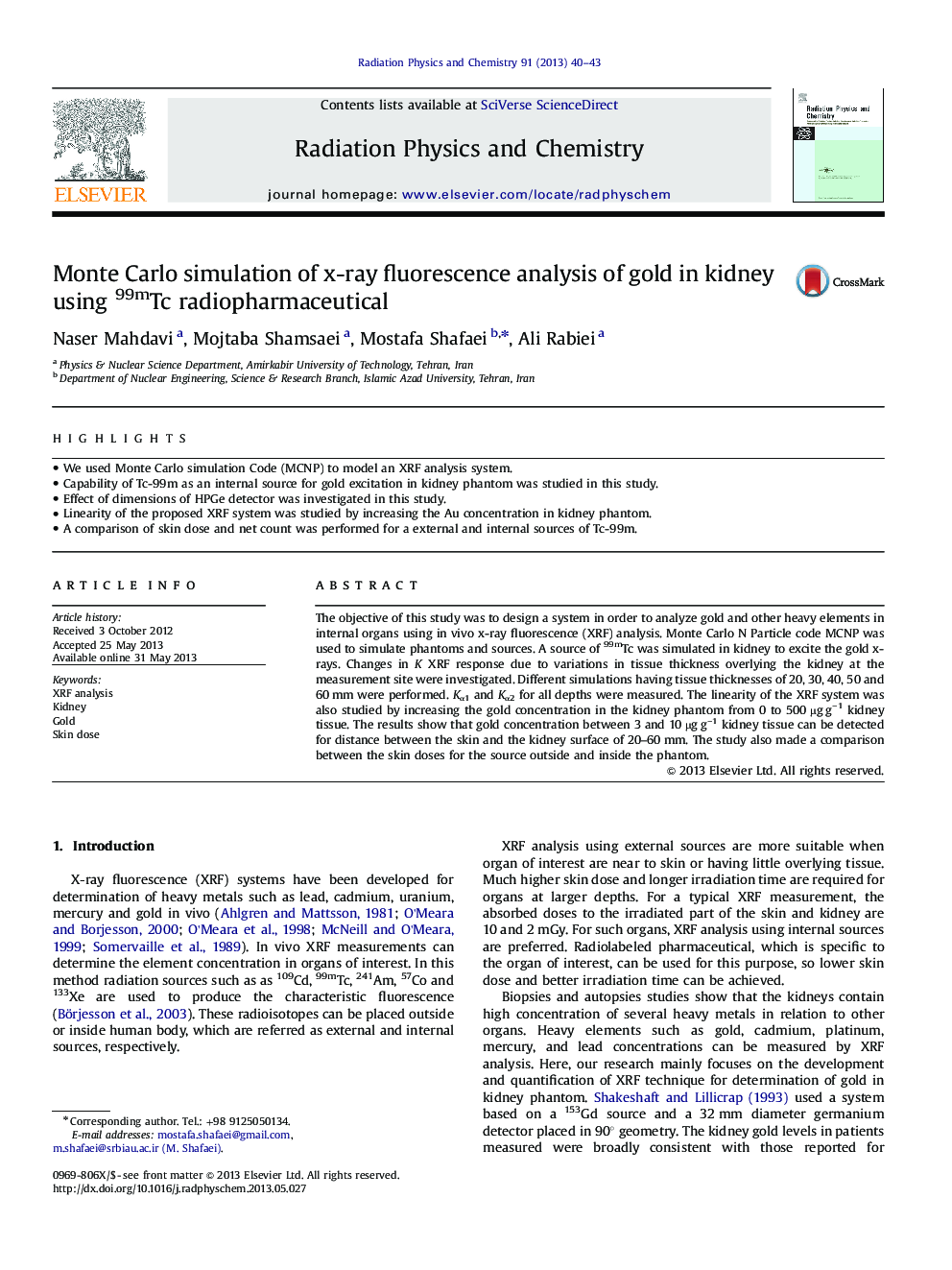| کد مقاله | کد نشریه | سال انتشار | مقاله انگلیسی | نسخه تمام متن |
|---|---|---|---|---|
| 1886206 | 1533533 | 2013 | 4 صفحه PDF | دانلود رایگان |

• We used Monte Carlo simulation Code (MCNP) to model an XRF analysis system.
• Capability of Tc-99m as an internal source for gold excitation in kidney phantom was studied in this study.
• Effect of dimensions of HPGe detector was investigated in this study.
• Linearity of the proposed XRF system was studied by increasing the Au concentration in kidney phantom.
• A comparison of skin dose and net count was performed for a external and internal sources of Tc-99m.
The objective of this study was to design a system in order to analyze gold and other heavy elements in internal organs using in vivo x-ray fluorescence (XRF) analysis. Monte Carlo N Particle code MCNP was used to simulate phantoms and sources. A source of 99mTc was simulated in kidney to excite the gold x-rays. Changes in K XRF response due to variations in tissue thickness overlying the kidney at the measurement site were investigated. Different simulations having tissue thicknesses of 20, 30, 40, 50 and 60 mm were performed. Kα1 and Kα2 for all depths were measured. The linearity of the XRF system was also studied by increasing the gold concentration in the kidney phantom from 0 to 500 µg g−1 kidney tissue. The results show that gold concentration between 3 and 10 µg g−1 kidney tissue can be detected for distance between the skin and the kidney surface of 20–60 mm. The study also made a comparison between the skin doses for the source outside and inside the phantom.
Journal: Radiation Physics and Chemistry - Volume 91, October 2013, Pages 40–43